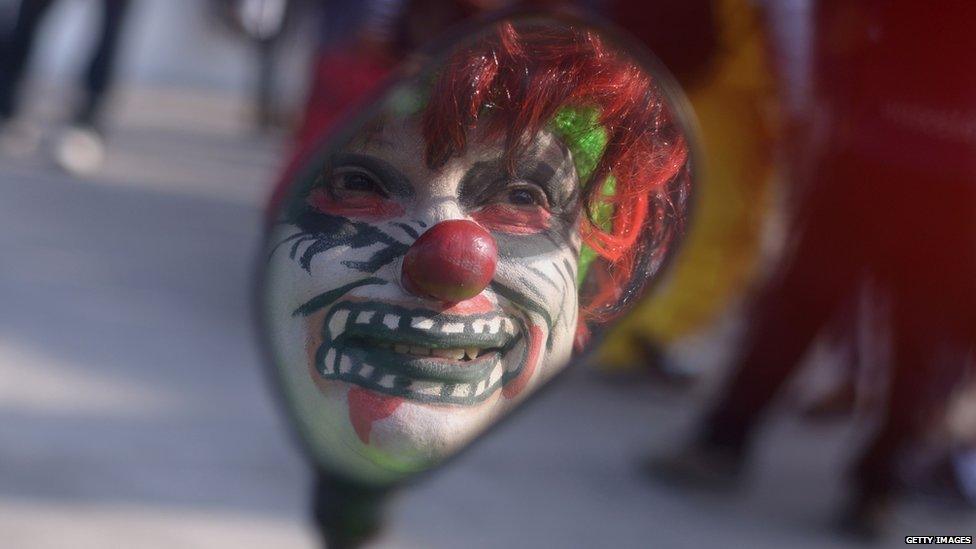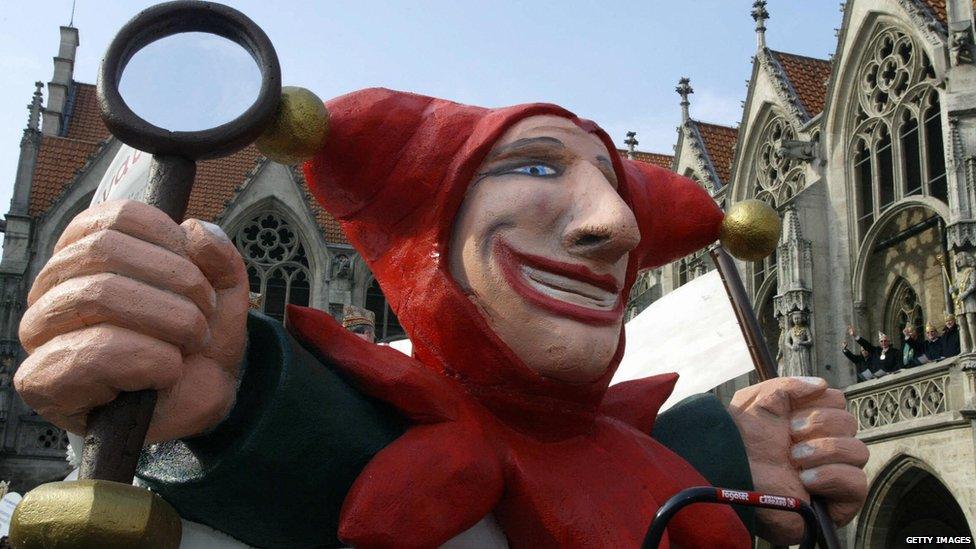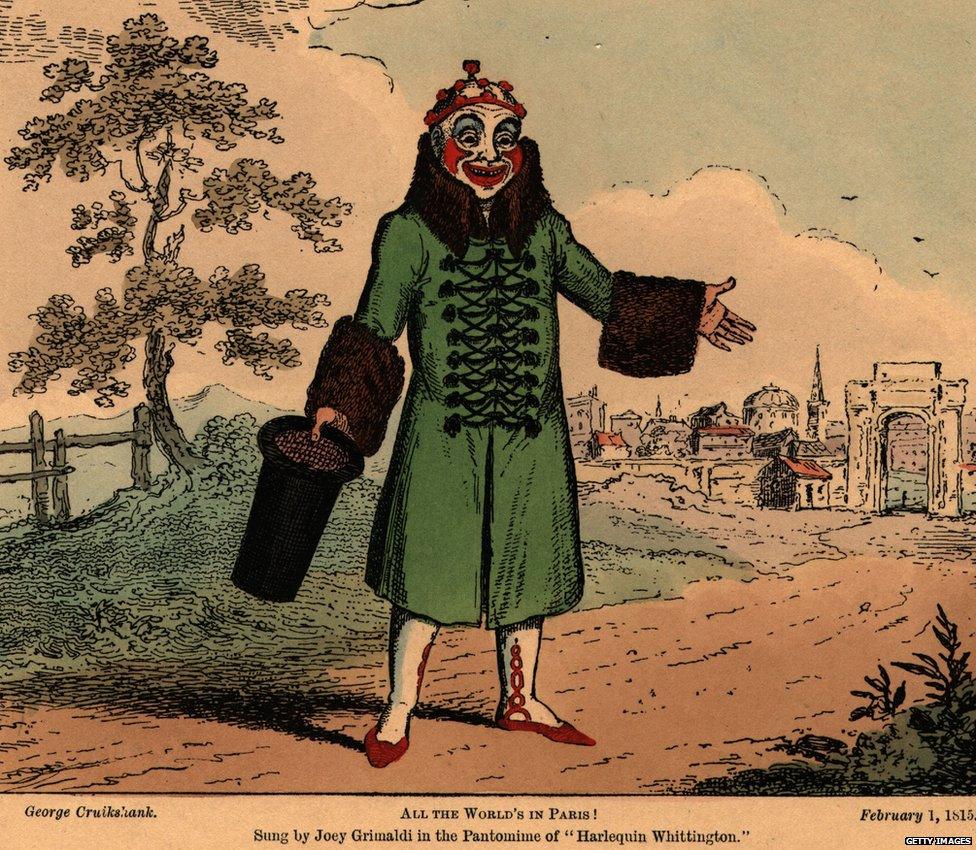Creepy clowns: Why do people find them so scary?
- Published

Don't be fooled by their custard-filled trousers and squirty lapel. The manic smile of a clown can be anything but funny.
Police across the UK have reported dozens of cases, where people dressed as clowns have terrified passers-by.
Whether they're lurking in parks, peering through windows or leaping out from bushes, something strange is going on.
But why clowns? What is about them that makes them so scary for so many people?
Clowns have been around for thousands of years
"The first recorded description of a clown was of a pygmy-type figure in Ancient Egypt, around 2000 BC," according to Dr Richard Talbot, senior lecturer in performance at the University of Salford.
And from then on, they've always highlighted something or someone that's different to the norm.

Skip forward to Medieval times and then to Shakespeare's plays. The fool or jester wasn't just a figure of fun.
"They would undermine a character, pick away at their status. Their role was to upend the social norm," says Dr Talbot.
"They would highlight a truth, or a secret that someone was trying to hide."
In simple terms, you can't trust a clown.
The painted face messes with our minds

Britain's first modern clown was Joseph Grimaldi. In the early 1800s, he invented the painted white face and red smile.
A genuine celebrity, he certainly lived up to the cliche of the "tears of a clown".
"While performing, he always looked manically happy," says Dr Talbot.
"But his personal life was a nightmare. He was known for being very difficult and demanding. His alcoholic son died early and he eventually died penniless."
Clown sightings in the UK
And what about that face? Just why is it so unsettling?
As a society, the face is one of the first things we look at. We look for clues, to help us "read" how the other person is feeling.
With clowns, that's impossible.
"There's a technical confusion. There's a painted face which stays static but the facial muscles are still moving underneath, so our brains can't quite make sense of it," according to Dr Talbot.
That taps into what Sigmund Freud - the founder of psychoanalysis - called the "uncanny". It's when you look at something that's recognisable but not quite right. And it makes you feel weird.
It's why clowns have been used to such terrifying effect in any number of horror films, such as Stephen King's It, Amusement and Killer Klowns from Outer Space.
While many people find clowns unsettling, a small number of people have a full-blown phobia. It's called coulrophobia.

Clowns represent chaos
We all project some kind of image, a way that we want to be seen by other people.
At at deep psychological level, clowns threaten that, according to Dr Talbot.
"They dress like a brightly-coloured child, inviting us to look at them but there's menace," he believes.
"There's a fear of betraying your emotions. When we're laughing, we're out of control and it's a fine line between laughing, crying and screaming.
"It's about being out of control. Clowns can trigger the very emotions we're trying to contain, in order for us to conform to being understood as sensible and serious beings."
And you thought you were just worried about getting a custard pie in the face didn't you?
Find us on Instagram at BBCNewsbeat, external and follow us on Snapchat, search for bbc_newsbeat